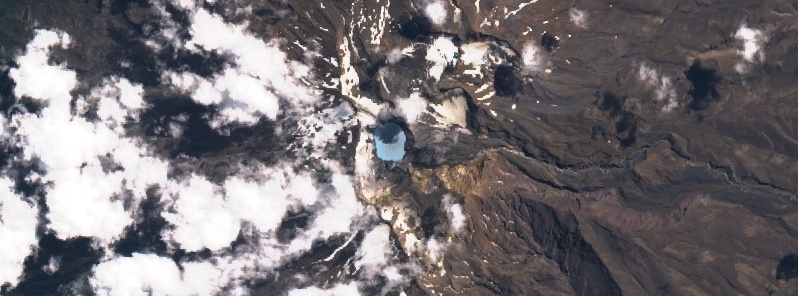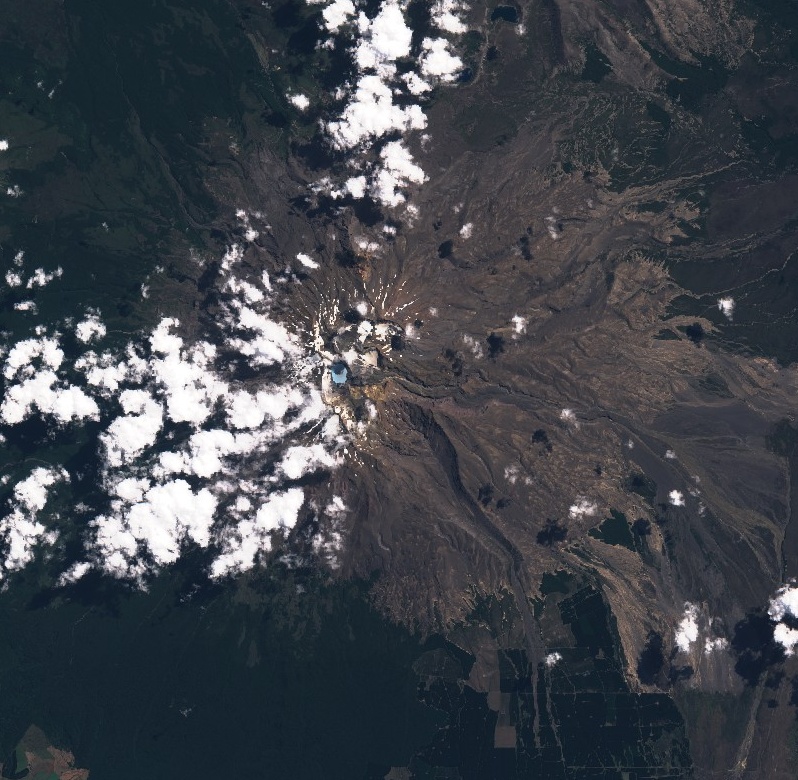Volcanic activity increased at Ruapehu but still within normal bounds, New Zealand

Crater Lake (Te Wai ā-moe) has responded to a short-lived episode of volcanic earthquakes beneath Mount Ruapehu, detected on February 22 and 23, 2020. Seismicity declined after initial uptick but is now back at similar levels.
To further understand the current activity, GNS Science volcanologists have collected water samples from Crater Lake, measured volcanic gases in the plume, and analyzed seismic data in detail.
The amounts of carbon dioxide (CO2) and sulphur gases (SO2 and H2S) have increased since the last measurements on February 7, 2020. However, the values are not at all unusual and are within the ranges measured over the past year, GNS Science Duty Volcanologist Michael Rosenberg noted. Water samples are being analyzed this week, with chemistry results expected by next week.
New analysis of last week’s volcanic earthquakes defines a source area 3 km (1.8 miles) beneath the summit of Ruapehu, which is normal for seismic activity at Ruapehu. Volcanic tremor increased in strength briefly last weekend, then declined during the week, and has now increased again to similar levels, Rosenberg said.
In response to the earthquakes last week, Crater Lake (Te Wai ā-moe) has slowly heated from 24 °C (75 °F) and is currently at 30 °C (86 °F). Upwelling of grey sediment and sulfur slicks on the lake surface were observed during our visit last week. The lake is being mixed and is overflowing through the usual outlet channel. The flow of gases and hydrothermal fluids through the lake show that the underlying vent area is open.
It is not unusual to observe volcanic earthquakes at Ruapehu and similar episodes of increased seismic activity and gas flux were observed during March 2018 and 2019, September 2017 and April 2016, Rosenberg said, adding that none of these resulted in a sustained increase in volcanic unrest.
The Volcanic Alert Level remains at Level 1. The Volcanic Alert Level reflects the current level of volcanic activity and is not a forecast of future activity. There is no change in the Aviation Color Code from Green.

Mt. Ruapehu Crater Lake on February 25, 2020. Credit: Copernicus EU/Sentinel-2, TW
Geological summary
Ruapehu, one of New Zealand's most active volcanoes, is a complex stratovolcano constructed during at least four cone-building episodes dating back to about 200 000 years ago.
The 110 km3 (26.4 mi3) dominantly andesitic volcanic massif is elongated in a NNE-SSW direction and surrounded by another 100 km3 (24 mi3) ring plain of volcaniclastic debris, including the Murimoto debris-avalanche deposit on the NW flank.
A series of subplinian eruptions took place between about 22 600 and 10 000 years ago, but pyroclastic flows have been infrequent. A single historically active vent, Crater Lake, is located in the broad summit region, but at least five other vents on the summit and flank have been active during the Holocene.
Frequent mild-to-moderate explosive eruptions have occurred in historical time from the Crater Lake vent, and tephra characteristics suggest that the crater lake may have formed as early as 3 000 years ago. Lahars produced by phreatic eruptions from the summit crater lake are a hazard to a ski area on the upper flanks and to lower river valleys. (GVP)
Featured image: Mt. Ruapehu Crater Lake on February 25, 2020. Credit: Copernicus EU/Sentinel-2, TW

Commenting rules and guidelines
We value the thoughts and opinions of our readers and welcome healthy discussions on our website. In order to maintain a respectful and positive community, we ask that all commenters follow these rules.